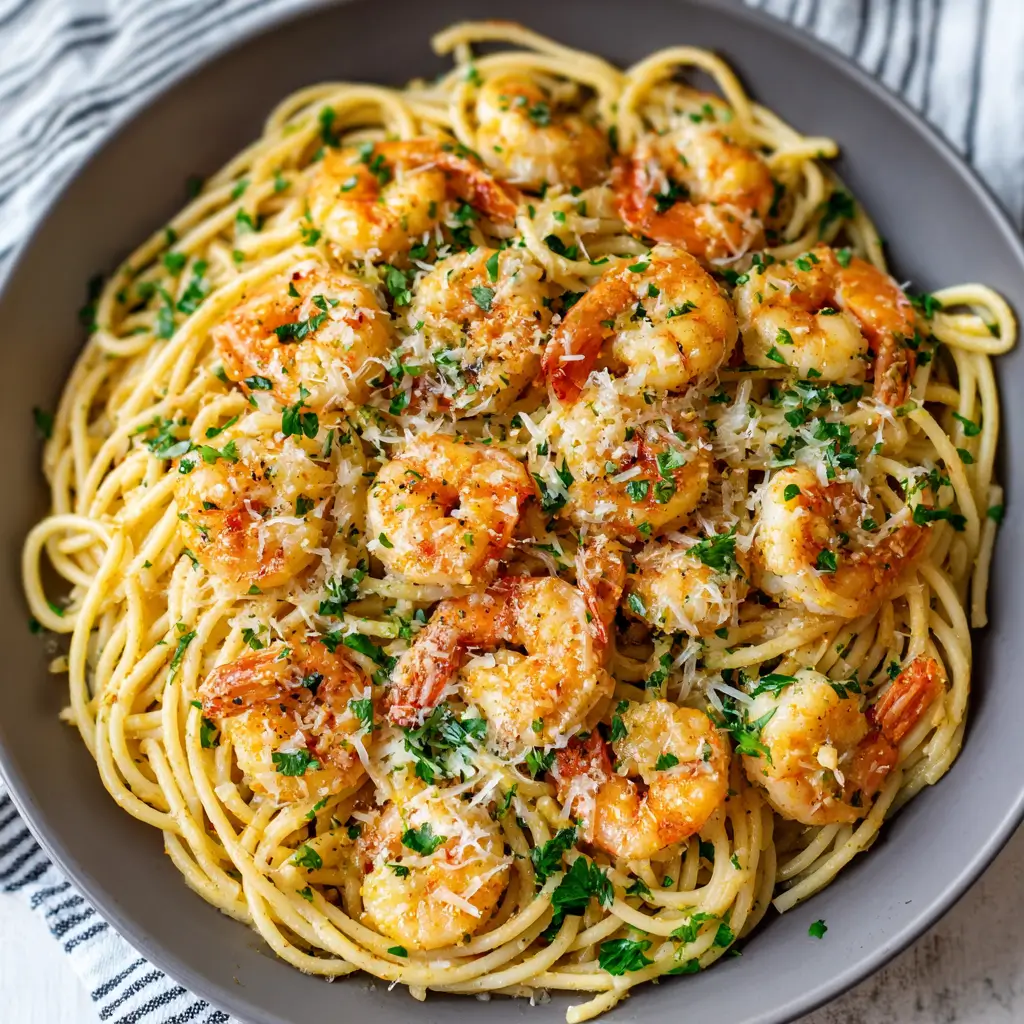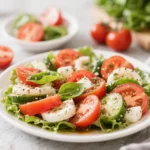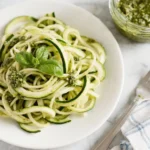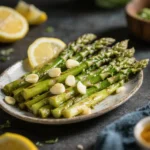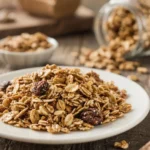Shrimp Scampi Spaghetti is a classic Italian-American dish that combines succulent shrimp with al dente spaghetti in a rich, garlicky, buttery sauce infused with white wine and lemon juice. Revered for its simplicity and bold flavors, this recipe has become a staple in homes and restaurants alike. Whether you’re preparing a romantic dinner or a quick weeknight meal, Shrimp Scampi Spaghetti delivers restaurant-quality taste with minimal effort. This comprehensive guide dives deep into the origins, ingredients, preparation techniques, variations, health benefits, and frequently asked questions about this beloved dish.
The History of Shrimp Scampi Spaghetti
The term “scampi” originally refers to a type of small lobster or langoustine popular in Italian cuisine, especially in Northern Italy. Traditional Scampi alla Busara, a dish from the Adriatic coast, features scampi cooked in a tomato-based sauce with garlic, breadcrumbs, and herbs. However, in the United States, where true scampi are not commonly available, chefs adapted the dish using large shrimp as a substitute—thus giving birth to what we now know as Shrimp Scampi.
Shrimp Scampi Spaghetti emerged during the mid-20th century as Italian immigrants brought their culinary traditions to America, blending them with local ingredients. The American version emphasizes a luxurious sauce made from butter, olive oil, garlic, dry white wine, lemon juice, and parsley, tossed with plump shrimp and pasta. Over time, it became one of the most iconic dishes representing Italian-American fusion cuisine. Today, Shrimp Scampi Spaghetti is celebrated not only for its delicious flavor but also for its elegant presentation and ease of preparation.
Ingredients Breakdown
The beauty of Shrimp Scampi Spaghetti lies in its use of fresh, high-quality ingredients that come together harmoniously. Here’s a detailed breakdown of each component:
- Shrimp: Medium to large-sized peeled and deveined shrimp (about 16–20 count per pound) are ideal. Fresh or thawed frozen shrimp work well. Look for wild-caught shrimp when possible for better texture and sustainability.
- Spaghetti: Classic dried or fresh spaghetti provides the perfect base. For a healthier option, whole wheat or legume-based pasta can be used without compromising flavor.
- Garlic: Freshly minced garlic is essential—it forms the aromatic backbone of the sauce. Use 4–6 cloves depending on your preference for pungency.
- Butter: Unsalted butter adds richness and helps emulsify the sauce. High-quality European-style butter enhances the depth of flavor.
- Olive Oil: Extra virgin olive oil contributes fruitiness and prevents the butter from burning during sautéing.
- White Wine: A crisp, dry white wine such as Pinot Grigio, Sauvignon Blanc, or Chardonnay deglazes the pan and brings acidity and complexity. Avoid cooking wines due to their high sodium content.
- Lemon Juice: Freshly squeezed lemon juice brightens the dish and balances the richness of the butter. Lemon zest can also be added for an extra citrus punch.
- Parsley: Flat-leaf (Italian) parsley adds freshness and color. It should be finely chopped and added at the end for optimal flavor.
- Red Pepper Flakes: Optional, but a pinch adds subtle heat and depth.
- Salt and Black Pepper: To season both the shrimp and the final dish.
- Parmesan Cheese (optional): While not traditional, some variations include grated Parmesan for a savory umami boost.
- Pasta Water: Reserved starchy water is crucial for creating a silky, cohesive sauce that clings to the noodles.
Step-by-Step Recipe
Follow these detailed steps to create a flawless plate of Shrimp Scampi Spaghetti:
- Prepare Ingredients: Pat the shrimp dry with paper towels and season lightly with salt and black pepper. Mince the garlic, chop the parsley, juice the lemon, and measure out all other ingredients before beginning—this ensures a smooth cooking process (mise en place).
- Cook the Pasta: Bring a large pot of salted water to a boil (use about 1 tablespoon of salt per 4 quarts of water). Add spaghetti and cook according to package instructions until al dente—usually 8–10 minutes. Before draining, reserve at least 1 cup of pasta water, then drain the spaghetti and set aside.
- Sauté the Garlic: In a large skillet or sauté pan over medium heat, combine 2 tablespoons of olive oil and 2 tablespoons of butter. Once the butter has melted and begins to foam slightly, add the minced garlic and red pepper flakes (if using). Sauté gently for about 1 minute until fragrant—do not let the garlic brown or it will turn bitter.
- Cook the Shrimp: Increase the heat to medium-high. Add the seasoned shrimp in a single layer and cook for about 1–2 minutes per side, just until they turn pink and opaque. Be careful not to overcook, as shrimp become rubbery when overdone. Remove the shrimp from the pan and set aside temporarily.
- Build the Sauce: Reduce the heat to medium. Pour in ½ cup of dry white wine and the juice of half a lemon. Simmer for 2–3 minutes, allowing the alcohol to evaporate and the sauce to reduce by nearly half. This concentrates the flavors and removes harshness.
- Emulsify the Sauce: Stir in another 2–3 tablespoons of cold butter, one piece at a time, swirling the pan constantly to create a creamy, glossy emulsion. This technique, known as monter au beurre, gives the sauce its luxurious texture.
- Combine Everything: Return the cooked shrimp to the skillet. Add the drained spaghetti and toss everything together thoroughly. Begin adding reserved pasta water, a few tablespoons at a time, until the sauce coats the noodles evenly. The starch in the water helps bind the sauce to the pasta.
- Finish with Herbs: Remove from heat and stir in the chopped parsley and optional lemon zest. Taste and adjust seasoning with additional salt, pepper, or lemon juice as needed.
- Serve Immediately: Plate the Shrimp Scampi Spaghetti right away while hot. Garnish with extra parsley, a drizzle of olive oil, and a wedge of lemon on the side.
Tips for Perfect Shrimp Scampi Spaghetti
- Don’t Overcook the Shrimp: Shrimp cook quickly—about 2 minutes per side is usually enough. Overcooking leads to tough, chewy shrimp.
- Use Fresh Garlic: Pre-minced or jarred garlic lacks the brightness and depth of freshly minced cloves.
- Reserve Pasta Water: Never skip this step! The starchy liquid is key to creating a restaurant-quality sauce that clings beautifully to the pasta.
- Balance Acidity: If the lemon flavor is too sharp, balance it with a bit more butter or a teaspoon of honey.
- Control Butter Temperature: Adding cold butter slowly while stirring prevents the sauce from breaking or separating.
- Avoid Crowding the Pan: Cook shrimp in batches if necessary to ensure even browning and proper searing.
- Season in Layers: Lightly season the shrimp, the pasta water, and the final dish for balanced flavor throughout.
- Let the Wine Reduce: Allowing the wine to simmer ensures the raw alcohol taste cooks off, leaving behind nuanced acidity and sweetness.
- Keep Pasta Moving: When combining everything, toss continuously to evenly distribute the sauce and prevent sticking.
- Serve Promptly: Like most pasta dishes, Shrimp Scampi Spaghetti is best enjoyed immediately after preparation.
Variations and Customizations
While traditional Shrimp Scampi Spaghetti is timeless, there are many creative ways to customize it based on dietary needs, flavor preferences, or seasonal ingredients:
- Creamy Scampi: Add ¼–½ cup of heavy cream or crème fraîche for a richer, velvety sauce. This variation is sometimes called “Shrimp Scampi Alfredo.”
- Tomato-Infused Scampi: Stir in halved cherry tomatoes or sun-dried tomatoes during the last minute of cooking for a pop of color and sweetness.
- Vegetable-Packed Version: Add sautéed spinach, asparagus, zucchini ribbons, or artichoke hearts for added nutrition and texture.
- Gluten-Free Option: Use gluten-free spaghetti made from rice, corn, or chickpeas. Ensure all other ingredients (like broth or wine) are certified gluten-free.
- Dairy-Free/Lighter Version: Replace butter with additional olive oil or vegan butter alternatives. Coconut oil can add a tropical nuance if desired.
- Seafood Medley: Combine shrimp with scallops, mussels, or calamari for a surf-and-turf scampi twist.
- Herb Variations: Substitute or supplement parsley with fresh basil, chives, or tarragon for different herbal notes.
- Spicier Kick: Increase red pepper flakes or add a dash of hot sauce like Calabrian chili paste or sriracha.
- Asian-Inspired Scampi: Swap lemon for lime, add ginger, soy sauce, and sesame oil, and garnish with green onions and sesame seeds.
- Baked Scampi: Transfer the finished dish to an oven-safe dish, top with breadcrumbs and Parmesan, and broil for 3–5 minutes for a crispy topping.
Health Considerations and Nutritional Value
Shrimp Scampi Spaghetti can be part of a healthy diet when prepared mindfully. Here’s a nutritional overview and tips for making it more nutritious:
- Shrimp: Low in calories and high in protein, shrimp provide essential nutrients like selenium, vitamin B12, phosphorus, and omega-3 fatty acids. However, they do contain cholesterol, though recent research suggests dietary cholesterol has less impact on blood cholesterol than previously thought.
- Pasta: Provides carbohydrates for energy. Opt for whole grain, lentil, or chickpea pasta to increase fiber and protein content while lowering the glycemic index.
- Fats: The dish traditionally uses butter and olive oil. Olive oil is rich in heart-healthy monounsaturated fats, while butter contains saturated fat. Moderation is key. Using a mix of olive oil and reduced butter or using light butter can help lower saturated fat intake.
- Sodium: Store-bought broths, canned ingredients, or pre-seasoned shrimp may increase sodium levels. Control salt by seasoning yourself and using low-sodium ingredients.
- Wine: Alcohol content mostly evaporates during cooking, but trace amounts remain. For alcohol-free versions, substitute with low-sodium vegetable broth and a splash of white wine vinegar or lemon juice.
- Calorie Count: A standard serving (about 1.5 cups) ranges from 450–600 calories depending on portion size and ingredient choices. Reducing butter and increasing vegetables can lower calorie density.
- Allergies: Contains shellfish (shrimp), wheat (in regular pasta), and dairy (butter). Suitable substitutions exist for most allergens with careful planning.
- Dietary Suitability: Can be adapted for keto (using zucchini noodles), paleo (with compliant fats and no grains), Mediterranean (emphasizing olive oil, seafood, and veggies), and low-carb diets.
Ingredients
- 12 oz (340g) spaghetti (or preferred pasta)
- 1 lb (450g) large shrimp, peeled and deveined
- 4 cloves garlic, minced
- ½ cup dry white wine (e.g., Pinot Grigio)
- 3 tbsp unsalted butter
- 3 tbsp extra virgin olive oil
- 1 large lemon (juice of half, zest optional)
- ¼ tsp red pepper flakes (optional)
- ½ cup fresh flat-leaf parsley, finely chopped
- Salt and freshly ground black pepper to taste
- 1 cup reserved pasta cooking water
- Grated Parmesan cheese (optional, for serving)
- Lemon wedges (for garnish)
Directions
- Bring a large pot of generously salted water to a boil. Add spaghetti and cook until al dente. Reserve 1 cup of pasta water before draining.
- While pasta cooks, heat olive oil and 2 tablespoons of butter in a large skillet over medium heat.
- Add minced garlic and red pepper flakes; sauté for 1 minute until fragrant.
- Increase heat to medium-high. Add shrimp in a single layer, season with salt and pepper, and cook 1–2 minutes per side until pink and opaque. Remove shrimp and set aside.
- Pour in white wine and lemon juice. Simmer 2–3 minutes until reduced by half.
- Reduce heat to medium. Whisk in remaining butter, one tablespoon at a time, until sauce is smooth and glossy.
- Return shrimp to the skillet. Add drained spaghetti and toss to coat.
- Gradually add reserved pasta water (3–4 tablespoons at a time) until sauce clings to the noodles.
- Stir in chopped parsley and lemon zest. Adjust seasoning.
- Serve immediately with extra parsley, lemon wedges, and optional Parmesan.
FAQ
Can I make Shrimp Scampi Spaghetti ahead of time?
It’s best served fresh, but you can prep ingredients in advance. Cook the pasta and sauce separately, then combine just before serving to maintain texture.
What kind of wine should I use?
Choose a dry, crisp white wine you’d enjoy drinking—Pinot Grigio, Sauvignon Blanc, or unoaked Chardonnay work well. Avoid sweet wines.
Can I use frozen shrimp?
Yes, but thaw them properly in the refrigerator overnight. Pat dry before cooking to ensure proper searing.
Is Shrimp Scampi healthy?
Yes, when made with moderate butter and whole grain pasta. Shrimp are high in protein and low in calories, making this a balanced meal when paired with vegetables.
Why did my sauce break?
Sauces break when butter is added too quickly or at too high a temperature. Always add cold butter slowly over medium heat and whisk or swirl constantly.
Can I use garlic powder instead of fresh garlic?
Fresh garlic is strongly recommended. Garlic powder lacks the vibrant flavor and aroma essential to authentic scampi.
How do I store leftovers?
Store in an airtight container in the refrigerator for up to 2 days. Reheat gently in a skillet with a splash of water or broth to revive the sauce.
Can I freeze Shrimp Scampi?
Freezing is not recommended, as shrimp become rubbery and the sauce may separate upon thawing.
Can I use angel hair or linguine instead of spaghetti?
Absolutely! Linguine is actually a traditional choice, and angel hair offers a delicate texture. Adjust cooking times accordingly.
What sides go well with Shrimp Scampi?
Serve with a crisp green salad, garlic bread, roasted vegetables, or steamed broccoli for a complete meal.
Summary
Shrimp Scampi Spaghetti is a luxurious yet simple dish that celebrates fresh seafood, aromatic garlic, and bright citrus in a silky butter-wine sauce. Quick to prepare and endlessly customizable, it’s a timeless favorite for any occasion.
